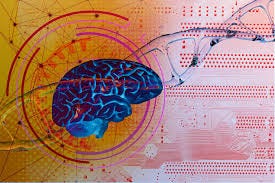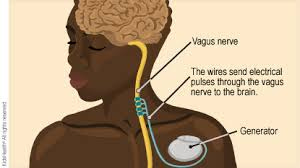Exactly How to Beat Hyper Independence 🧠
The Neuroscience of Learning to Receive Without Losing Yourself ( min Read)
TL;DR Summary
Hyper-independence isn’t strength; it’s your nervous system protecting you from the pain of past dependence.
When care once came with control, your brain wired “connection = danger.”
Healing starts with awareness: find the rule your body still believes it must follow.
Retrain your nervous system to stay calm when love shows up.
Practice receiving without performing — micro moments of letting help land.
You’re not losing independence. You’re upgrading to safety in connection.
What Hyper-Independence Really Is
You don’t reject help because you want to; you reject it because your nervous system doesn’t feel safe receiving it.
You know that person who’ll drop everything to help someone else, but when they’re sick and someone offers soup, they say, “Oh, I’m fine.”
That’s not self-sufficiency.
That’s hyper-independence, and it’s one of the most sophisticated trauma responses there is.
You didn’t choose it. Your nervous system did.
Hyper-independence is what happens when dependence once felt dangerous.
And this is exactly what we’re talking about today!
Let’s break it down.
Where Hyper-Independence Comes From
In childhood, if the people you relied on were inconsistent, critical, or made love conditional, your developing brain learned that needing others was a liability.
To survive, your mind created a brilliant adaptation: “If I do it all myself, I can’t be hurt.”
In Internal Family Systems (IFS) language, this is a protective “part” of you that took over to keep you safe when you were younger.
But to the brain, this isn’t abstract. It’s biology.
When you rely on yourself exclusively, your amygdala (the brain’s fear center) stays in charge, scanning for cues of potential betrayal or disappointment.
Your prefrontal cortex, which normally helps you discern actual safety, gets overridden by old implicit memories stored in the hippocampus and insula, areas that encode emotional pain and body states.
So, when someone offers help, your nervous system doesn’t interpret it as “connection.”
It hears, “Danger: if I need them, I could lose myself.”
So you adapted. You learned to rely on no one.
To the outside world, it looks like strength…
Inside, it’s hypervigilance.
Why Your Brain Confuses Care with Control
From a neuroscience perspective, this confusion starts deep in your body’s wiring.
When you were little, your brain’s first job wasn’t achievement; it was safety.
Every time you reached for comfort, your nervous system asked a silent question:
“When I connect, what happens next?”
If connection brought calm, your brain paired care with safety.
If a connection brought chaos, such as criticism, guilt, or punishment, your brain paired care with danger.
Here’s how that wiring locks in:
The amygdala acts like an alarm, tagging experiences as “safe” or “unsafe.”
The hippocampus stores the emotional memory of those moments, not as stories, but as felt states.
The insula keeps track of internal body sensations tied to those states (tight chest, clenched jaw, frozen belly).
So now, when someone tries to care for you, your amygdala recognizes the sensory pattern, tone of voice, closeness, attention and fires a false alarm like: “Last time we felt this, we lost control.”
Even though the person in front of you is safe, your nervous system is time-traveling.
You’re not reacting to them; you’re reacting to the past memory of care that came with cost.
It’s like your nervous system built its GPS in a childhood neighborhood where every road led to danger.
Even though you’ve moved to a safe city, your GPS still yells “Recalculate!” anytime someone gets too close.
This is why “being cared for” can feel like “being controlled.”
How to Rewire It
Rewiring begins when you help your brain disentangle those associations.
Every time you let someone care for you and nothing bad happens, your nervous system updates the file.
That’s neuroplasticity in action.
Your brain is pruning old fear circuits and reinforcing new ones through calm, repeated exposure to safe connections.
You can help this process along with mindful awareness:
When you feel that old panic rise, pause and name it: “My body’s remembering something old.”
Ground through your senses, notice your feet, your breath, the tone of voice that’s gentle, not threatening.
Let your prefrontal cortex — your logic and empathy center — come back online and whisper to the amygdala, “This person is safe. We’re safe.”
Every repetition softens the reflex.
Over time, your body learns the difference between being cared for and being controlled.
That’s when connection starts to feel like freedom again.
Once you’ve got this awareness down, you can move into some of the deeper baggage keeping you stuck!
Here are the first 3 steps I suggest to my clients!
Beating Hyper Independence at the Root
Step One: Unpack the Baggage
This step isn’t about forcing yourself to “just receive.”
It’s about finding the rule your nervous system still believes it has to follow.
IFS offers a simple way in: Find the part of you that tenses when someone says, “Let me help.”
Ask it gently:
When did you first decide you couldn’t need anyone?
What was happening then?
What did you believe you had to do to stay safe?
Write down what you hear. Often, these parts carry rules like:
“Love means I lose myself.”
“If I need them, they’ll leave.”
“Support is weakness.”
Imagine these rules like outdated software still running your system in the background.
You can’t download “healthy interdependence 2.0” until you uninstall the old code.
Think of this step like unpacking an old suitcase you’ve been dragging from relationship to relationship.
Inside, you’ll find the clothes that once fit your childhood self, like protective beliefs that once kept you safe but now constrict your growth.
If you don’t open the suitcase, you’ll keep mistaking protection for power.
Step Two: Retrain Your Nervous System
Even after you know the rule, your body still reacts as if the old danger is real.
That’s because your nervous system learned to associate receiving with loss of control.
So, when someone offers to care for you, your vagus nerve (which helps regulate safety cues) may signal a threat response, so your chest tightens, your breath shortens, and your thoughts race.
You’re not broken. Your body just doesn’t trust peace yet.
Here’s how you begin to rewire it:
Pause before answering help with “I’m fine.”
Just give yourself a beat.Notice what happens inside.
Where do you feel the urge to pull away or apologize? What old rules are coming up?Name it.
“This is my hyper independent protector trying to keep me safe.”Breathe: slow, deep, through the nose.
This activates your parasympathetic system (via the ventral vagus), signaling, “We’re not in danger anymore.”
Neuroplasticity thrives on repetition. Each time you stay with that moment of discomfort instead of pushing it away, your brain rewires toward safety in connection.
Think of it like physical therapy for your nervous system.
Gentle, consistent reps that teach your body: “I can be supported and still be safe.”
Step Three: Practice Receiving Without Performing
Once your nervous system can stay present when love arrives, the next step is to receive it without earning it.
Hyper-independence isn’t just doing it all yourself; it’s earning your right to exist through usefulness.
You learned that love had to be repaid.
So when someone offers care freely, it scrambles your internal accounting system.
The antidote? Micro-receiving, baby!!
When someone compliments you, don’t deflect. just say, “Thank you.”
When a friend brings you dinner, resist apologizing; say, “This helps more than you know.”
When your partner offers support, don’t rush to reciprocate, breathe, and let it in.
Each of these small acts is a somatic re-education for your brain.
They show your body that receiving doesn’t mean submission, it means connection.
Over time, this rewires your insula (which tracks bodily safety) and anterior cingulate cortex (which helps you stay connected during vulnerability).
Slowly, you’ll feel what your protectors never got to: being loved without performing for it.
And that’s the shift from survival mode to secure connection!
From Self-Reliance to Safe Reliance
Your hyper-independence was never a flaw.
It was proof of how brilliantly your body tried to protect you when you were younger.
But survival strategies aren’t meant to last forever. They’re meant to keep you safe until safety becomes possible.
And that’s where you are now. You’re not trying to “get rid” of your independence, you’re learning to let it evolve.
Because true strength isn’t “I don’t need anyone.” It’s “I know when to stand on my own and when to lean in.”
You don’t need to earn care. You just need to stay present for it.
That’s how you rewrite your nervous system from I’ve got me to It’s safe to let someone else have me too.
I believe in you!
And, as always, until next time… Live Heroically 🧠
Want to Work With Me? Here Are a Few Ways I Can Help You
Check out my FREE webinar on The ONE Skill That Attracts Secure Love Fast. If you’re smart, attractive, successful, and self-aware, but love still feels like a minefield, this is for you!
Grab my new ebook: Exactly How to Become Emotionally Available: It’s a step-by-step guide for attracting and keeping the love you seek, built for the success but single among us!
Become a paid subscriber to the Mind, Brain, Body Lab Digest: You’ll get subscriber-only video posts, email replies, access to my entire blog archive, early access to new products, workshops & tools I create!
Supporting Research
Porges, S. W. (2011). The Polyvagal Theory: Neurophysiological Foundations of Emotions, Attachment, Communication, and Self-Regulation. New York: W. W. Norton.
Siegel, D. J. (2012). The Developing Mind: How Relationships and the Brain Interact to Shape Who We Are. Guilford Press.
Schore, A. N. (2012). The Science of the Art of Psychotherapy. W. W. Norton.
Schwartz, R. C., & Sweezy, M. (2020). Internal Family Systems Therapy (2nd ed.). Guilford Press.
Cozolino, L. (2017). The Neuroscience of Psychotherapy: Healing the Social Brain. W. W. Norton.











